8 Independent Books that Celebrate America with all its Grandeur ... and Faults
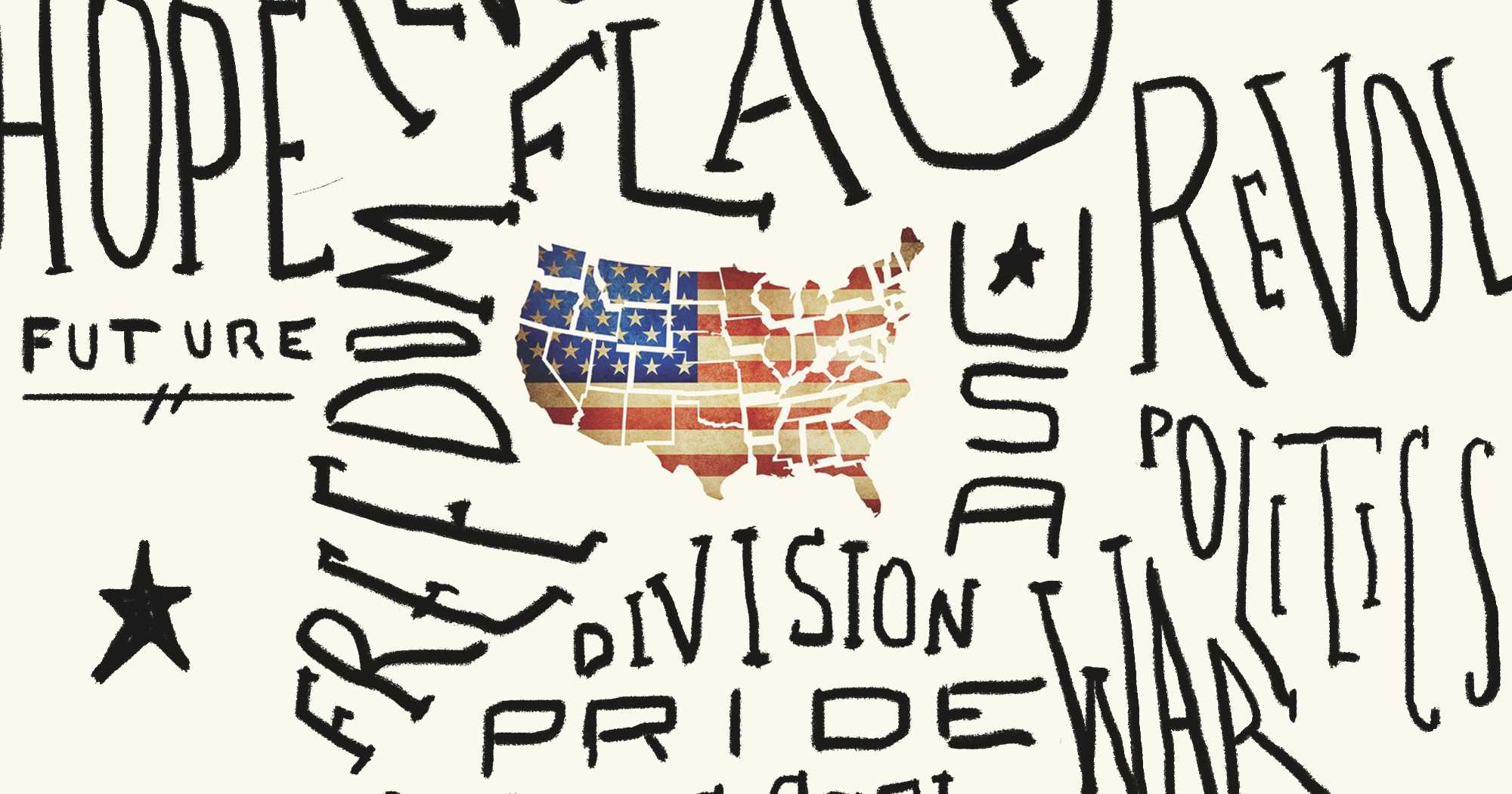
Fireworks, sparklers, and reflecting deeply on how this majestic country came to be—there’s nothing more American than that. America is more than just who we are today. We have a richly storied past, with admirable heroes and glorious legends. It is all our history just as noble as all that? No, but neither is our present. But America strives to be its best and on the Fourth of July, we celebrate that. So, get a book that celebrates America too, with all its grandeur and faults.
Whether you’re reminiscing on the past or looking to the future, we’ve got a book for how you’d like to celebrate the Fourth of July.
The Reunited States of America
How We Can Bridge the Partisan Divide
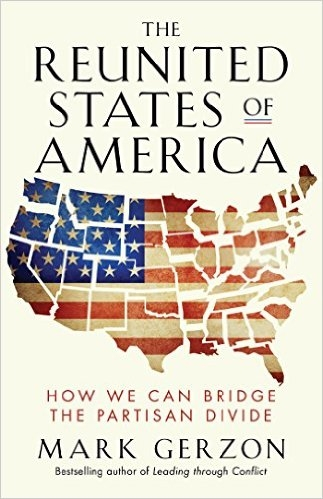
Mark Gerzon
Berrett-Koehler Publishers
Softcover $16.95 (216pp)
978-1-62656-658-3
Buy: Local Bookstore (Bookshop)
Though voters seem to have lost their will to collaborate, hope is not lost, and this book proposes a way forward.
In this thought-provoking book that serves as a call to action, Mark Gerzon posits that most Americans today will never respect, let alone vote for, presidential candidates they vehemently disagree with.
What has been lost in American democracy, the book asserts, is a shared expectation that, despite party loyalty, an American president will always look out for the best interests of the nation. Such trust has been clouded by a divisive political culture, it claims, in which the system is driven by media and by partisan personalities, rather than unity. As evidence, Gerzon points to figures such as Rush Limbaugh, who symbolize a new zeitgeist in American political culture––a shift away from the common ground to fundamentalism, fueled by vitriol and “bordering on hatred.”
“We have lost our capacity to collaborate,” Gerzon says. This carefully organized book identifies and outlines the polarized viewpoints that define the dichotomous party system responsible for today’s bitter partisanship. He says that the majority of voting Americans “confirm what we already believe so unquestioningly.” We become, he further argues, prisoners of our points of view, incapable of bridging distances. As a corrective, The Reunited States of America encourages learning about issues from people with different perspectives. The hope is that doing so will result in expanded points of view and engender a return to a workable common ground.
Sometimes reading like a manual, the text of The Reunited States intersperses step-by-step instructions with more inspiring prose and unravels a “secret code” embedded in American democracy. A discussion of pluralism, references to the founding fathers, and a definition of e pluribus unum seem a little outdated, but they are appended with the inspiring suggestion that if a political viewpoint is not represented in a current organization, a person can start his or her own party: “You are now a Founding Father or Founding Mother.”
The Reunited States of America is both an indictment of current political failings and a hopeful look at ways in which voters might bridge a widening divide. This is a better option for all those who feel distressed by the current political climate.
KAI WHITE (May 27, 2016)
America the Beautiful
Reflections on Her Past, Present and Future
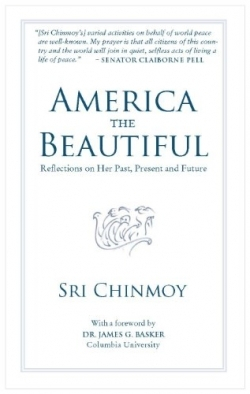
Sri Chinmoy
Illumine Group
Softcover $9.95 (118pp)
978-0-9824284-6-7
Patriotism as a virtue seems almost old-fashioned these days. Except on rare occasions, our society views patriotic sentiments much like a Norman Rockwell painting: quaint, heart-warming, and dated. In fact, unbalanced criticism of our government arguably constitutes the norm. But to Sri Chinmoy, our country remains worthy of love and praise.
America the Beautiful collects Chinmoy’s poetry and prose honoring his adopted homeland. The compilation calls readers to view America with fresh eyes and remember what makes her great: a belief in freedom, founding fathers who penned a world-changing Constitution, and a people whose generosity and industry proved essential to the world.
The book’s chapters reflect on America’s founding, its growth toward fulfilling its original vision, where it stands today, and where it can head in the future. In each section, quotes and poems rooted in a deep love for America celebrate the nation’s spirit. They also honor great patriots who guided the nation, such as George Washington, Abraham Lincoln, and Martin Luther King, Jr.
Chinmoy’s background adds a unique weight to his perspective. An immigrant from India, he came to America in the mid-1960s. A musician, artist, athlete, writer, poet, and advocate for world peace, he became well-known to world leaders through his work at the United Nations and lectures at universities such as Cambridge and Harvard.
Chinmoy’s vast world experience makes the statements and poems in this book all the more fascinating. His effusive praise for America followed by quotes on what patriotism means inspires readers to rekindle their love for their homeland. “America’s vision was to become transcendentally great. America’s future is to become universally good,” he writes.
Although small in size, America the Beautiful is a challenging read. Chinmoy’s writing style makes his meaning difficult to grasp at times. One often feels the quotes require further context to be fully understood. And because it is a collection of quotes, his thoughts seem to jump all over the place without a narrative or thematic thread. Perhaps a different format would be helpful here.
Nevertheless, this compilation demonstrates a patriotism that almost inspires jealousy and guilt. To see America’s gifts afresh makes it clear that Americans often take these blessings for granted. This book would be a great addition to the library of anyone who loves history or politics. And it’s the perfect balance for the many books published today that focus on where America has gone wrong. As Chinmoy says, “America has bad qualities, true, but American principles are absolutely divine.”
DIANE GARDNER (November 1, 2010)
La Bandera que Amamos (The Flag We Love)
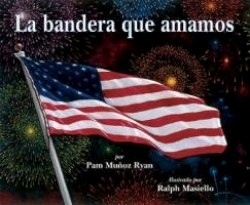
Pam Muñoz Ryan
Ralph Masiello, illustrator
Yanitzia Canetti, translator
Charlesbridge Publishing
Unknown $7.95 (32pp)
978-1-57091-519-2
The American flag represents independence, courage, and strength. This new translation of the author’s award-winning The Flag We Love offers an historical account of the American flag and also discusses the qualities and ideals that the flag represents to Americans.
Through simple verses and extensive prose sidebars, Ryan provides excellent information about the flag, as well as about various points in history. For example, many people don’t know that the original Pledge of Allegiance appeared in a children’s magazine in 1892. It was written for a ceremony celebrating Columbus’s discovery of America. Ryan has authored six children’s books and is currently completing her first novel for older students. She is a native of California, where she earned her bachelor’s and master’s degrees at San Diego University. She has also worked as an early childhood instructor.
The illustrations in this picture book are so clear and realistic that they almost seem to be photographs. They are rich with a wide palette of colors. The illustrator splendidly depicts everything from the first flag, to steamers passing a lighthouse, to the Vietnam Memorial. Each is lovingly rendered and will please children and adults alike. Masiello has illustrated six previous alphabet and counting books. A graduate of Rhode Island School of Design, he has won many awards for his artwork.
The words and illustrations combine to make this a wonderful book about the Stars and Stripes. They explain not only what the flag is physically and historically, but also what it stands for in the hearts of Americans.
JENNIFER GRIFFIN (October 16, 2002)
The American Challenge: Preserving the Greatness of America in the 21st Century
What Every American Should Know about Their Country
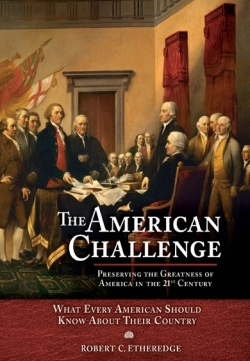
Robert C. Etheredge
Miravista Press
Softcover $14.95 (416pp)
978-0-9665804-4-0
Readers of this reference book, study guide, and how-to manual in one are also charged with an interesting “challenge”: Could you pass the US citizenship test? Concerned about the lack of knowledge among the general citizenry about America’s origins, Etheredge, a former naval officer, provides a guide that strives to instill pride in American heritage, encourage civic responsibility, and promote patriotism.
Available in print, e-book, and color PDF versions, each section gives an overview of a segment of American history and culture. An easy-to-follow timeline traces historical events, and in the enhanced PDF version audio excerpts of speeches bring these events to life.
Significant cultural contributions by poets, athletes—and even outlaws—are described. Song lyrics with a patriotic theme are included, with recordings also available on the PDF version. The most unsuccessful of all the sections includes a large list of notable American actors and actresses. It would be more informative if well-known films, plays, or television programs they appeared in were listed as well, establishing context.
Brief biographical descriptions in encyclopedia style detail each president and his notable contributions. Famous speeches from Truman, Eisenhower, and Kennedy, as well as other leaders, such as Martin Luther King, Jr., will likely encourage readers to learn more about the speakers and topics. It is regrettable, however, that among the thirty-three speeches in the section on great orators, there are no speeches by women.
Trivia questions and common phrases and idioms—such as “throw in the towel” and “spill the beans”—offer a fun way for young children to learn, as do visual aids provided through symbols and icons, such as state flags and illustrated instructions on flag etiquette, which can also be a useful how-to guide for many organizations.
The citizenship test in the final chapter is eye-opening at one hundred questions. Presented in a study-guide format, page numbers and websites are provided so readers can easily locate the answers (the enhanced PDF version allows readers to immediately jump to the corresponding page), making it a handy practice test that could also be valuable for elementary school teachers using it in a classroom setting.
Offering a mostly neutral account of American political and cultural events, there are a few examples of a conservative slant, referring to the 2010 healthcare bill as “Obamacare,” and describing the Patriot Act as widely supported, ignoring such vigorous opponents to the legislation as the American Library Association and the ACLU. That said, overall this account of American life will be a helpful resource for individuals, educators, and organizational leaders interested in increasing civic engagement.
MARIA SIANO (February 14, 2012)
The Boy Who Carried the Flag
We Both Read
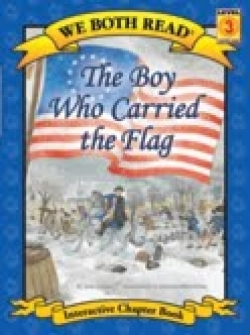
Jana Carson
Johanna Westerman, illustrator
Treasure Bay
Unknown $9.95 (41pp)
978-1-60115-247-3
Buy: Local Bookstore (Bookshop)
Every child dreams about being a hero, and following in the footsteps of heroic parents is probably near the top of the list. Ben, the son of New Hampshire farmers, gets to do both in this historically-based story set during the Revolutionary War. His adventures will stoke interest in America’s formative moments, using Aristotle’s method of delighting in order to teach.
This latest installment in the We Both Read Series features its trademark style of interactive narrative, in which emergent readers and more fluent partners alternate reading passages aloud. Each section is marked for difficulty, and less experienced readers will benefit from hearing more advanced vocabulary and sentence structures modeled aloud, motivating them to want to read the entire story on their own.
In 1776, Ben’s father, known for his expertise in following “Indian hunting trails,” is recruited to lead the famed Green Mountain Boys against the occupying British forces at Fort Ticonderoga in upstate New York. This historic victory over a small defending force enables the Continental Army to bring badly needed supplies to General George Washington’s freezing soldiers, who were camped outside of British-occupied Philadelphia. However, it also endangers Ben’s family.
When British redcoats advance on their homestead the family is rescued by two Native American friends, Keeper and Spirit. The men escort them to Philadelphia, where Ben and his mother find employment with famed seamstress Betsy Ross. When George Washington arrives to commission the nation’s new flag, he brings news of Ben’s father’s heroism and tells Ben that a national flag will give his soldiers “the courage and strength to build a nation.” However, when British soldiers occupy Philadelphia just before Christmas, Ben himself volunteers to brave the wind and snow on a dangerous mission.
Johanna Westerman’s picturesque illustrations provide glimpses of the Northeastern countryside in the eighteenth century. Her version of Washington crossing the Delaware includes a frightened boy lashed by cold rain in “a storm so fierce that our boats barely made it across.” Children who recognize this famous voyage from their textbooks will easily place themselves in the boat alongside Ben.
Jana Carson has written several other books in the We Both Read Series, including About Space, Stop Teasing Taylor, and The Mighty Little Lion Hunter. This is her most advanced of these books, and young readers will treasure its suspenseful plot and the joy of practicing how to read well.
ELIZABETH BREAU (February 15, 2011)
Washington’s Farewell To His Officers
After Victory In The Revolution
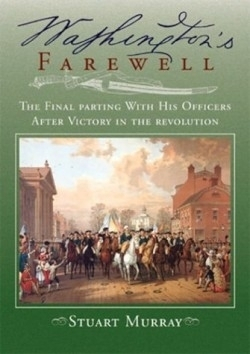
Stuart Murray
Images from the Past
Unknown $21.00 (200pp)
978-1-884592-20-1
“Perhaps His Excellency’s (George Washington’s) was indeed a charmed and divinely protected life, as many of his soldiers believed … .” During the French and Indian war he had been shot at point blank and missed and during the revolution several times Redcoats had the chance to put a rifle ball through him at close range but for various reasons chose not to.
As Samuel Shaw penned, “I cannot too heartily coincide with the orator … who so delicately describes him “as a person who appears to be raised by Heaven to show how high humanity can soar?.” Murray uses a writer’s touch to make history come alive. His opening chapter of Washington’s triumphal victory entrance into New York City with its attendant “flag pole gag” initiated by the departing British, sets up this remarkably readable history of the war for colonial independence from England.
The three cannon rounds that signaled Washington that all was ready for his entrance into New York City almost never came because the American flag could not be raised. The setting is the Fraunces Tavern Long Room at the end of November and first part of December of 1783. A good deal of history had played out in Fraunces Tavern, with its nine large rooms for elegant parties, five bedrooms with fireplaces and a spacious cozy ale room at street level. The British commandeered the Tavern for its use during the war. The Sons of Liberty used the tavern meeting rooms to resolve to fight the tea tax. Now, George Washington, before he went to Philadelphia to resign his command, met with his generals for one last farewell, at least the ones that hung on during the year long negotiations in Paris with the British. Murray artfully tells the history of the Revolution with each general’s contribution as he embraces Washington one last time. The passion and synergy is electric. “To them and all the men in the Long Room, memories of the war, once so fearsome and awesome and astounding, were fading. Nothing had prepared them for that, either. When they left this room today, the Revolution would be finished. It would live only in memories…”
Murray is the author of twenty books in the historical fiction and nonfiction genres. He has been an author, editor and journalist for more than twenty-five years.
Washington’s Farewell To His Officers should be a supplement to school and academic American history texts, as well as a fine addition to public library history collections.
The Black Regiment of the American Revolution
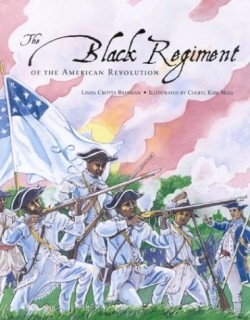
Cheryl Kirk Noll, author, illustrator
Linda Crotta Brennan
Moon Mountain Publishing
Unknown $16.95 (32pp)
978-1-931659-06-2
The role of African-Americans in United States? military history is not well known. Stories about the heroic Tuskegee Airmen, who fought in World War II, are becoming more familiar, as are others about the blacks who fought in the Civil War. The picture becomes more complete with this dramatic account of a black regiment, mostly composed of slaves, who bravely held back the British and Hessians during a major battle of the American Revolutionary War.
This unusual regiment was organized because exhausted white enlisted soldiers from Rhode Island, a tiny New England slave state, were returning home, and an effective force was needed to replace them. General James Varnum approached the state legislature about raising an all-black regiment. This would mean that blacks could fight, not just serve as cooks or waiters in the white army.
Although owners resisted the idea of arming their slaves, the legislature passed a law allowing “every able-bodied Negro, mulatto, or Indian man-slave” to enlist. Owners would be reimbursed, and the enlisted slaves would be freed. Within four months the law was rescinded, but there were already 200 enlistees, most of them former slaves, in the new regiment.
The well-drilled, smartly dressed regiment proved its mettle, even after the French allies retreated and the white militia was pulled back by the governor to protect other parts of the mainland. In a fierce battle against crack Hessian fighters, the Black Regiment drove back assaults three times. Later the black soldiers joined with others to defeat the British at Yorktown, Virginia.
The award-winning author, a Rhode Island resident, has previously published a children’s nonfiction book about North Carolina, as well as the picture books Flannel Kisses and Marshmallow Kisses. Here, she weaves the stories of several individual soldiers through her detailed historical narrative. She explains that victory did not mean happy personal endings for many of the black soldiers. Those who survived often had to work at low-paying jobs to pay for family members’ freedom.
The illustrator has created art for more than twenty children’s books about American history, including Revolutionary War Days and Civil War Days, as well as books about other cultures. The picture-book format of this volume allows space for her handsome illustrations, plus maps and materials from the Library of Congress and the Rhode Island Historical Society.
The book is a refreshingly straightforward history; it is not dumbed down for middle readers in its vocabulary or content. A glossary, suggested reading, and Web sites to visit will lead youngsters to even more knowledge. This detailed resource book is not just for Rhode Island readers, but for anyone who wants to learn more about the role of African-Americans in this nation’s history.
LINDA SALISBURY (October 16, 2004)
Divided Loyalties
A Revolutionary War Fifer’s Story
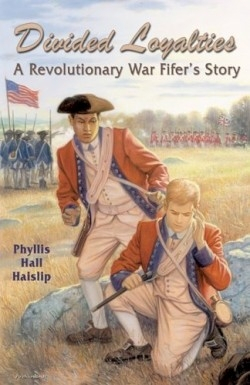
Phyllis Hall Haislip
White Mane Kids
Unknown $7.95 (136pp)
978-1-57249-369-8
It’s the 1780s, Thomas Jefferson is governor of Virginia, the Virginia state capital is in Williamsburg, and the entire country is deeply divided. Patriot against Loyalist. Husband against wife. Eleven-year-old Teddy must somehow set aside his innocence and immaturity when his father decides to use him as a pawn. The plan is simple: Teddy must join a unit of the State Garrison Regiment. This will surely convince Mother to abandon her devotion to British rule. But the plan goes awry. Instead of enlisting to play the fife for the regiment stationed in Williamsburg, Teddy mistakenly joins the one headed directly for the Battle of Camden.
The author, who has written extensively on Virginia history, including young adult novels and the nonfiction book Marching in Time: The Colonial Williamsburg Fife and Drum Corps, creates a series of challenging events and circumstances for Teddy to endure. Shortly after enlisting, he finds that he will share a unit with the two people in Williamsburg who seem to hate him most, his former teacher and a young man named Matt Fowler. Despite disputes with Fowler, harsh living and working conditions, and the low morale of his unit, Teddy is dedicated to doing his part to defend the colonies against the British. Together, he and a slave named Josh work at becoming better fifers.
The concept of loyalty remains obscure to Teddy throughout the novel. He refuses to inform his commanding officer, Sergeant Major MacAllister, that he has joined the wrong unit because he believes that doing so will breach promises made to his father. Later, Teddy views MacAllister’s loyalty to the Continental Army after deserting the British as a conundrum, though Benedict Arnold’s traitorous acts seem clearer. It is not until he questions the sincerity of Josh’s friendship, and experiences the extent of his mother’s love, that he realizes the fluidity that sometimes exists around notions of loyalty and trust.
The attention to the details of the purpose and duties of fifers and drummers in the Continental Army are informative, as are the descriptions of historic Williamsburg. Residing in that town, the author has taken many of the photos of historic sites throughout the book, while others were acquired from various sources. Though Haislip’s treatment of slavery, race, class, and gender issues does not seem fully developed or particularly convincing for the time period, this does not diminish the central ideas in each of the short chapters.
American history teachers and students, Virginians especially, will find this book a great addition to textbook accounts of the Revolutionary War. The back matter (headed “Author’s Note,” “Sample Document,” “Glossary,” “Resources,” and “To Plan a Visit”) will remind readers that Divided Loyalties is not just a fictional story, but a story grounded in American history and triumph.
Hannah Hohman
